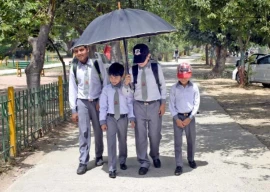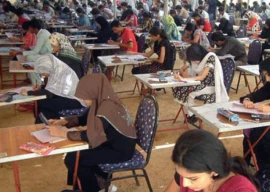
While the Food and Agriculture Organisation (FAO) is on target for distributing essential seeds across the flood-stricken provinces to help revive the agricultural sector of the country, water is still standing in the fields across villages in Sindh, presenting a great challenge as hundreds of thousands of farmers might not be able to plant their seeds on time.
Due to slow recession of flood waters in Sindh, the need for emergency agricultural support and donor funding still remains high. An estimated 700,000 flood-affected farming families in Sindh require immediate assistance. “Floods came in later in Sindh and the province is not receiving enough attention,” said Luigi Damiani, representative FAO, Pakistan. “There has been an immense loss of not only land but livestock which is expensive to recover,” Damiani added.
The FAO is focused on the need to increase support which must be channeled to help livestock brave the winter. Over 22 million surviving livestock including buffaloes, cows, goats, sheep and poultry have been affected by the floods and must now be provided feed to survive in the harsh climate. According to Damiani, winter is a critical time to complete the distribution of seeds for plantation.
Along with other concerns the agency is highlighting the need to maximise the output of winter plantation and prepare ahead for spring. He also stressed the need to scale up efforts to repair thousands of irrigation channels that have been damaged due to the floods. Repairing the channels on time is vital to meet the water needs of both seasons.
Forecasting the upcoming months Damiani said that all the needs of the Kharif season need to be met on time. He highlighted that Pakistan has to complete two seasons each of Rabi and Kharif to get back on track. “It will take Pakistan two years to get back to the state where it was before the floods” said Damiani.
Damiani said more developmental projects need to be initiated alongside early recovery and reconstruction projects. “Recovery is going to take a long time. Even if people are going back, they are going back to vastly destroyed lands, loss of livelihood and on top of that no money to make purchases to start over once again,” said Damiani.
The agricultural sector provides livelihood to 80 per cent of the flood-affected population in Pakistan and is the most essential sector in need of assistance if the country is to meet the food requirements of its growing population.
Published in The Express Tribune, December 14th, 2010.


































COMMENTS (2)
Comments are moderated and generally will be posted if they are on-topic and not abusive.
For more information, please see our Comments FAQ